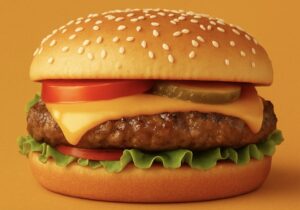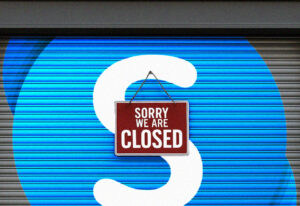After years of speculation, anticipation, and regulatory hurdles, Tesla is poised to make its boldest move yet in the realm of autonomous driving. Beginning with a soft launch in Austin, Texas, the electric vehicle giant is preparing to deploy its first wave of robotaxis—driverless cars powered entirely by Tesla’s proprietary Full Self-Driving (FSD) system.
This moment marks a major milestone not only for Tesla but for the broader future of urban transportation, automated systems, and smart city design. While Tesla has previously included autonomous features in its production vehicles, the launch of an entirely driverless fleet elevates the brand’s ambitions into new territory.
The Soft Launch Strategy: Why Austin?
Austin isn’t just a random test city. Tesla’s relationship with the Texas capital has deepened over the past few years, from the construction of Giga Texas, one of the company’s major production facilities, to Elon Musk’s own relocation to the state. With a population open to tech-forward solutions and a relatively mild regulatory environment, Austin presents an ideal urban laboratory for robotaxi deployment.
The soft launch phase means Tesla will operate a limited number of these autonomous vehicles—believed to be a modified version of the Model Y or a bespoke robotaxi platform—on pre-defined city routes. Initial usage will be invitation-only, likely for Tesla employees, stakeholders, or local regulators. This controlled environment allows Tesla to gather live data, monitor vehicle behavior in real-world scenarios, and ensure safety protocols are working as intended.
How Tesla’s Robotaxi Works
The Tesla robotaxi platform is built upon years of investment in artificial intelligence, machine learning, and sensor technology. Unlike many competitors who rely on LiDAR, Tesla’s system is famously built on a camera-based vision architecture known as Tesla Vision, supported by a neural network trained on millions of miles of user-submitted driving data.
Some key features of the robotaxi include:
-
Full Self-Driving (FSD) Version 12: The most advanced iteration yet, incorporating end-to-end AI logic.
-
Camera-only Sensor Suite: Eight exterior cameras with 360-degree vision, no radar or LiDAR.
-
No Steering Wheel (in some versions): Future iterations may feature minimalist interiors designed exclusively for passenger use.
-
OTA Updates: Continual improvement via over-the-air software updates.
-
Safety Protocols: Emergency shut-off, remote monitoring, and AI-based obstacle handling.
The vision is for these robotaxis to operate as on-demand ride-hailing vehicles, summoned via the Tesla app, much like Uber or Lyft—except without a driver.
The Bigger Picture: A Disruptive Moment for Mobility
If successful, Tesla’s robotaxi fleet has the potential to reshape how people move in cities. Elon Musk has repeatedly claimed that robotaxis could lower transportation costs, reduce traffic fatalities, and even replace the need for personal car ownership altogether.
Tesla projects that operating a robotaxi could be 10 times cheaper per mile than traditional ride-hailing services. That’s because driver pay is eliminated, maintenance is reduced through fleet standardization, and energy costs are kept low due to Tesla’s electric powertrains.
There’s also an environmental argument: if widely adopted, autonomous EVs could help reduce city-level carbon emissions, especially if paired with renewable energy infrastructure.
Challenges Ahead: Regulation, Ethics, and Public Perception
Despite the optimism, Tesla’s robotaxi program faces serious hurdles:
-
Regulatory Approval: Texas laws currently allow for autonomous vehicle testing, but wide-scale deployment will require closer collaboration with state and federal authorities.
-
Safety Concerns: Tesla’s FSD system has been under intense scrutiny, with critics citing incidents where the system failed in edge-case scenarios. The company must prove its fleet can operate reliably without human intervention.
-
Ethical Dilemmas: How does a robotaxi prioritize choices in emergency situations? Who is liable in an accident? These are ongoing debates in AI ethics.
-
Public Trust: Even if the technology works flawlessly, will people be willing to step into a car with no driver? Trust will be a crucial element in adoption.
Tesla’s soft launch is an opportunity to address these questions before rolling out robotaxis on a broader scale.
Literary and Cultural Context: Autonomy in Science Fiction and Society
The concept of autonomous vehicles has long existed in the literary and cinematic imagination. From 2001: A Space Odyssey’s HAL 9000 to Knight Rider’s KITT, AI-driven transport has always been a lens through which society explores technological trust, power dynamics, and the limits of human control.
In dystopian literature, automation is often tied to themes of surveillance, corporatism, and dehumanization. However, there’s also a utopian current—imagining smart cities with zero emissions, no traffic fatalities, and hyper-efficiency powered by clean technology.
Tesla’s robotaxi project sits at the crossroads of these two narratives. It could either be seen as a harbinger of a new urban utopia or a step toward tech monopolization of public space. Public perception, therefore, will be shaped not just by performance, but by how the rollout is framed and experienced.
What Comes Next? Scaling, Expansion, and Competition
Following a successful pilot in Austin, Tesla is expected to expand robotaxi operations to cities like San Francisco, Miami, and possibly international hubs where autonomous driving regulations are more permissive.
However, Tesla is not alone in this race. Companies like Waymo (Google), Cruise (GM), and Zoox (Amazon) are all vying for control of the emerging robotaxi market. Unlike Tesla, many of these competitors rely on hybrid sensor approaches (LiDAR + radar + cameras), a contrast that may shape long-term reliability and public acceptance.
Scaling robotaxis to full commercial availability will also require:
-
Mass production of robotaxi-specific vehicles
-
Standardized safety certification
-
Robust infrastructure for charging, maintenance, and fleet management
The soft launch of Tesla’s robotaxi fleet in Austin may seem small in scope, but it represents one of the most ambitious technological shifts in modern transportation history. With autonomous driving technology inching closer to full realization, Tesla’s foray into driverless mobility could serve as a prototype for future cities.
As with any disruptive innovation, the rollout will be closely watched, debated, and critiqued. But one thing is certain: the road to the future is increasingly driverless—and Tesla wants to be in the front seat, even if no one’s holding the wheel.
No comments yet.







